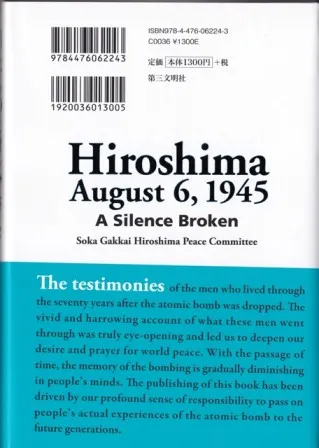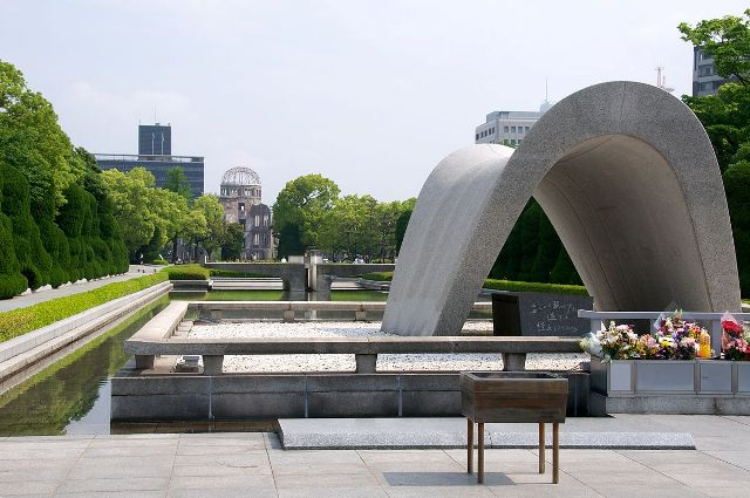By MONZURUL HUQ*
TOKYO (IDN) – Human memory is short, particularly when it comes to record war and destruction. Countless details of various times portraying the accounts of misery and human suffering probably remind us of something vague and abstract; something distant and detached, not at all related to the realities that we face at any given time. Since what is seen as vague or blurred hardly serves as solid evidence, and what is distant hardly seems inspiring for stirring our conscience to the level of awakening, we tend to forget about what war and destruction brings to mankind soon after the waves of tragic realities subside and pave the way for a relative tranquil setting, at least for a short time. ARABIC | JAPANESE | CHINESE | KOREAN| NORWEGIAN |SPANISH|
This fragile nature of our memory is what plays always at the hands of those who tend to take us back to the point where erasing the memory for the sake of so called greater group interest becomes easier and we turn back the wheels of progress for a journey taking the reverse course. This is why war and subsequent self destruction has become part of human being’s eternal journey in quest of a peaceful and tranquil life.
The real causes for much of such failures might be traced back in our inability to grasp the depth of human sufferings that war always brings. And as long as we continue ignoring the fathom of that depth, turning swords into ploughshares will always remain a deferred dream, elusive ever for us to reach anywhere closer. And here, once again, memory can play a very important role; a role that would help us, at least in real terms, to grasp the depth of tragedy that war might bring at a time when our destructive capabilities by far supersede anything that we can think about. And it is precisely from this understanding that the fourteen survivors of Hiroshima atomic bombing in August 6, 1945, make a heroic contribution by knocking at our conscience through the recollection and recounting of memories of their innocent adolescent years, which were torn apart by the hellfire unleashed on that fateful morning.
A Silence Broken
“Hiroshima – A Silence Broken” is a timely publication launched in March this year, well ahead of the 70h anniversary of the destruction of Hiroshima and Nagasaki. The genre of the book is oral history that tells the stories of fourteen Atomic bomb survivors of Hiroshima who were born between the years 1927 and 1939. All of them survived the horrors of the aftermath of atomic bombing and eventually lived a long life, although bearing the severe wounds, both in body and in their mind. The road ahead of them had not been a paved one as they had to undergo life-long medical treatment that in most of the cases was successful in healing the wounds they suffered. However, the tacit discriminatory attitude that many of the survivors had to encounter in the society was probably more painful than the physical suffering and deep in their minds the scars remained painful for very long
The period immediately after the bombing was for Japan a time of confusion and also a time of disarray. In the chaotic post-war period, recalling the nightmarish experiences of A-bomb survivors became a taboo as Japan came under occupation and victors naturally were not happy about disclosing the evil acts of their own. Moreover, the deadly scars and deformed body shape that many of them had to live with also caused complexity in their mind and they gradually started keeping shut the doors of those bad memories. Many remained silent about the experiences they had to go through for being at a closer proximity of epicenters. But fortunately for the world, a significant number of survivors later decided to break the silence and come forward with their distinct narratives. Each of the fourteen stories told in “Hiroshima- A Silence Broken” are unique in nature, as the extent of real sufferings of the survivors had never been the same.
A burned woman, a dead child and an orphan
Tadashi Kihara remembers vividly a tragic scene that had been haunting him ever since he encountered it soon after the bombing. Though he was injured by the bombing, he still continued helping the search work for trapped and badly injured people around Hiroshima. During one of those nightly search missions he heard a crying voice begging for water. The voice was feeble but intense. Getting closer what he saw was a badly burned woman holding a baby in her arms. She had serious burns all over her body and the baby was holding mother’s nipple on its lips. A closer look exposed the reality more vividly and Kihara could sense that the baby was already dead and it was probably mother’s refusal to accept the reality that she kept holding the dead baby as if she was still feeding the child with mother’s milk. Here is how Kihara tells us of his own reflection, “There was nothing I could do for her. I put my hands together and apologized, and walked away. This still causes pain in my heart.”

During his younger days Kihara was hiding the fact that he was an atomic bomb survivor. But after turning 65, he changed his mind and decided to tell his story to the future generations. What he wants now is not to let the young forget about the horrible experiences that once caused a badly wounded mother to hold her dead child closer to her burnt body and beg for water. Kihara must be feeling a sense of relief that the scene causing pain deep in his heart for so many years he could at last expose to others with the hope that no mother anywhere in this world ever have to experience anything like that.
All those fourteen survivors telling their stories in the latest collection were boys in their teens with full of vigor and energy. The atomic bomb not only shattered their dreams of a brighter future, but also changed their lives in a way that none could ever think about, even in their nightmares.
Much appealing is the story of Shoso Kawamoto, who came to know he had become an A-bomb orphan on his return to Hiroshima in search of his parents three days after the bombing. For 11-year old Kawamoto the only shelter he could find was in a temple that offered free food, but not enough to fill-up his hungry stomach. He later became a street orphan, struggling hard for mere survival, sometime by stealing rice cakes from street vendors, sometime working for gangsters groups systematically exploiting street children at the time. He regrets that not much has been told about those doubly disadvantaged victims of Hiroshima bombing, who after becoming orphans had to go through extreme difficulties. His narrative also informs us that before the bombing, about 8,600 elementary school students in Hiroshima were evacuated to the countryside. Of those 2,700 became orphans. Out of these only 700 were fortunate enough to find places at orphanages and the rest were left abandoned to become street children.
The new horror
What binds all these fourteen survivors is not only their common suffering, but also their self imposed isolation for quite long that kept them silent about telling others the horrors they had gone through. What prompted them to come forward and break the silence is the new horror that they have witnessed unleashing after the Fukushima nuclear disaster in March 2011. Since then they have taken it as their solemn responsibility to tell people about the extent of damage that nuclear fallout can cause.
Katsuyki Shimoi is a survivor who tells us how watching Fukushima workers on a TV program reminded him of what happened to his brother a few days after the bombing and thus prompting him to tell his side of the story of survival and death after the radiation. His younger brother Akio was only 13 and was in a street car at the time of bombing along with his friend Nakamura. The car was completely destroyed, however, both survived and returned home. Here is what he tells us about what happened next: “After about 20 days, my brother’s hair started falling out and red spots appeared all over his body…His shoulder and arms got thinner and thinner until they were like chopsticks…My brother was only 13, but he looked like an old man when he passed away. I later heard that his friend Nakamura passed away on the same day.”
It was more than 65 years after that, seeing a worker in the Fukushima nuclear power plant on TV Shimoi he thought he saw a rash on the worker’s arms, the same kind of rash that caused his brother so much pain leading to his death. It made him shudder and prompted him to break his silence.
Recording the testaments of A-bomb survivors is a timely initiative taken by Soka Gakkai Hiroshima Peace Conference. The Conference believes that the end to the nuclear age will not come unless strong public opinion is mobilized for gaining support for nuclear abolition. “Hiroshima – A Silence Broken” is the eighth volume of the collection of Hiroshima atomic bomb survivors’ testimonies over the years and first to be published after the Fukushima disaster.
Soka Gakkai Hiroshima Peace Conference has decided to publish the latest volume in English translation as well for making the voices of atomic bomb survivors widely heard outside Japan too. And as the world is getting ready to mark the seventieth anniversary of that deadly man-made disaster in a year’s time, this makes it a timely publication reminding us not only of the horrors of the past, but also of the path that we need to take to stop forever the deadly race leading to our common destruction.
*Monzurul Huq is a Bangladesh journalist, who has authored three books in Bengali on Japan and other subjects. He moved to Japan in 1994 after working at the United Nations Information Center in Dhaka and BBC World Service in London. He represents two leading national dailies of Bangladesh – Prothom Alo and the Daily Star – and contributes regularly to a number of other important publications in Bangladesh. He has written extensively both in English and Bengali on matters related to Japan and East Asia. He is also a visiting professor at the Tokyo University of Foreign Studies, Yokohama National University and Keisen University, teaching subjects related to Japanese politics, Japanese media, the developing world and world affairs. He also works as a radio broadcaster for NHK. A member of the Foreign Correspondents’ Club of Japan since 2000, he has served at the Board of Directors of the Club for two consecutive terms before being elected president of the Club. [IDN-InDepthNews – 30 June 2014]
Top left picture: Hiroshima Peace Memorial Park | Credit: Wikimedia Commons




